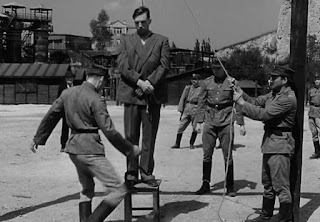Hanged by the mob
The burgler may have thought he’d be thrashed and then handed over to the police. He and his accomplices had broken into a driver’s house — but the family woke up. His accomplices fled, but he was caught. The driver called the neighbours to teach him a lesson. By the time the lesson was over — and before the police could arrive — the thief was dead. He had been beaten to death by perfectly ordinary people with no history of violence.
The incident took place last week in a south Delhi colony. In the normal course of things, it would have been labelled an aberration — a stray incident where things got out of hand. But it was just one more in a long list of such incidents that are being reported practically every day from every corner of the country. The number of lynching incidents reported over the past couple of months has given rise to a question: is vigilantism on the rise in India?
Just consider some of the more infamous cases. In Kerala, on October 7, a pregnant Tamil beggar named Jyoti was stripped and beaten up by a mob outside a temple because it was suspected that she had stolen a gold chain. In Vaishali, in Bihar, 10 men suspected of being thieves were beaten to death by a mob in end-September. In Bihar’s Nawada district a man was blinded by a mob for trying to steal a motorcycle in September. A week or so later, two men suspected of being kidnappers were lynched in the same district. In neighbouring Jharkhand, three men, again alleged kidnappers, were killed by a mob in October. In September and October, over 20 people were estimated to have been lynched in Bihar alone.
In Delhi, school teacher Uma Khurana was accused by a local channel in August of enticing her students into prostitution. A mob stormed the school and beat her up. She was relatively lucky — the police arrived just in time to save her from being beaten to death. In October, the driver of a Blueline bus that ran down a student was rescued by the police before he was killed by passersby
Clearly, lynching is fast turning into a people’s solution to problems — though there are still some people who hold it is not on the rise, but is being blown up by the media. Former Punjab police chief K.P.S. Gill belongs to this school of thought. “When an act of violence ceases to be a small column in the newspaper and gets blown up by the electronic media for a national audience, one might tend to believe that such incidents are on the rise,” he says.
There might be a grain of truth in his assertions, but there have been simply too many incidents in the last few months to pass them off as aberrations. Some experts believe that mob violence is a reflection of the growing frustration and angst over issues such as growing crime.
Delhi-based psychiatrist Sameer Parikh points out that at the lowest and basic level, these sentiments show up in the refusal of people to give up seats for the elderly in buses and trains. At the other end, he says, it shows up in mob violence. “Violence is a good outlet for angst,” remarks Parikh. Umesh Kumar Verma, sociologist with the Jharkand Tribal Research Institute, Ranchi, agrees, up to a point. “It is an opportunity to vent their anger against the system,” he says.
People, the experts point out, are taking the law into their own hands because of the slow crumbling of the law and order machinery. The police force is widely perceived as venally corrupt, and the judiciary as excruciatingly slow. As Sankar Sen, fellow, Institute of Social Sciences, New Delhi, and former director general of the National Human Rights Commission, says: “A major factor that fuels mob violence is the refusal of the police to register cases.” If a case doesn’t get registered, it means a crime hasn’t been officially committed. Sen points out that in Uttar Pradesh, the figures for the number of cases per lakh of population was higher in 1903 than it is in 2007.
There are many takers for his views. Says Bula Bhadra, sociologist at Calcutta University, “When people fail to get justice from the state, they resort to instant justice.”
The perception that a case in court is usually always a protracted process also leads people to find instant solutions to their problems. K.L. Prasad, joint commissioner, law and order, Mumbai, believes that the judicial system has to be beefed up. “Quicker justice in courts will really help. We need to press for two or three shift courts,” he says. “Cases go on for years and people tend to forget. The other day I had gone to give evidence on a particular case after 23 years and it was difficult for me to remember the man’s face. If as a trained cop I could falter, imagine what would be the fate of so many cases that drag on for years.”
But not everybody agrees. Saket Kumar Singh, superintendent of police of Ranchi — which had 13 such killings in recent weeks — doesn’t believe that lynching is on the rise because of a breakdown in law and order. Singh, in fact, has rather a unique take on the increase in mob violence. He calls it the culture of sendra – or the “kill”. According to him, hunting down animals — sendra — was a key feature of tribal societies. The difference now is that the killings are no longer restricted to animals; it has spread to the killing of human beings, he says. “No matter how much the police does,” he asserts, “the killings will continue.”
But many of the mobs that go for the kill actually comprise urban men and women of mixed backgrounds. In his book Maximum City, Suketu Mehta tried to fathom the psychology of the men who make up the Shiv Sena mobs. He pointed out that these were people who had little control over their lives. They lived in slums, they travelled in crowded trains, they often had jobs that offered little dignity. They had nothing to look forward to — and were constantly bowing to superior powers in every sphere of life. By being a part of a rioting mob, Mehta says, they often felt empowered. They got to mete out humiliation to the very people who humiliated them at all other times.
The explanations are there, but what is the government doing about it? A few weeks ago, Prime Minister Manmohan Singh came out strongly against the culture of vigilantism in a speech. Unfortunately, there has been no concrete action to stop the rise of lynching since he made that speech. The police, for instance, can come down strictly and act against people who have formed lynching mobs. As sociologist Verma points out, the fact that few people are ever prosecuted for a lynching incident makes others feel that they can get away with it too.
That is why the government needs to act — and act quickly. The rise of vigilantism in the country is a tell-tale sign of a society that is slowly degenerating — and moving down from the rule of the law to the rule of the mob.
(Additional reporting by Velly Thevar in Mumbai, Anirban Das Mahapatra in New Delhi and V. Kumara Swamy in Calcutta)
.jpg)










Comments
Post a Comment